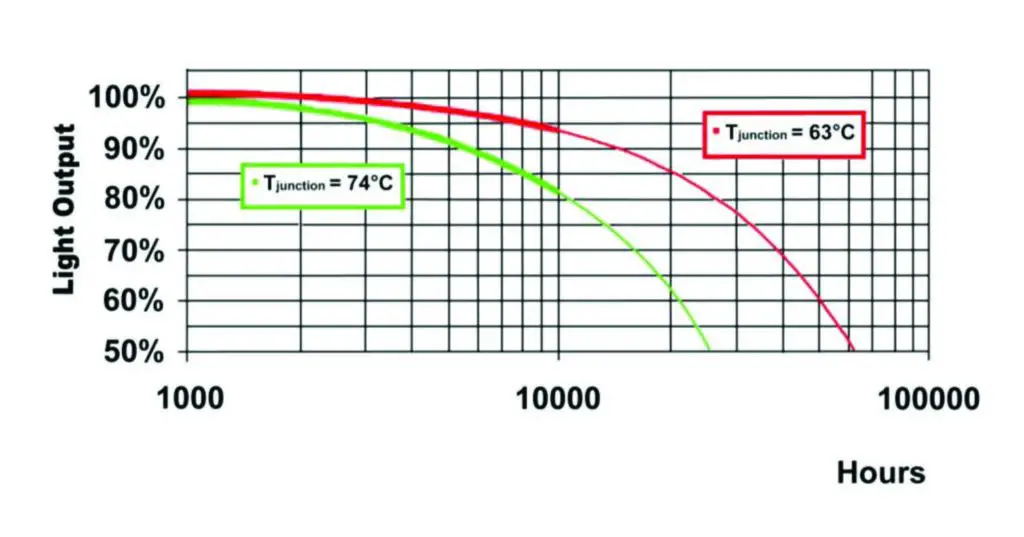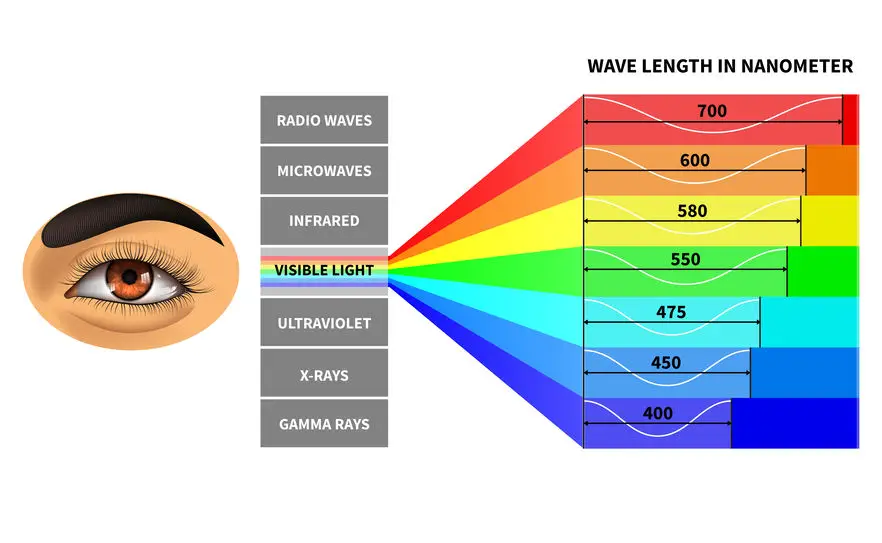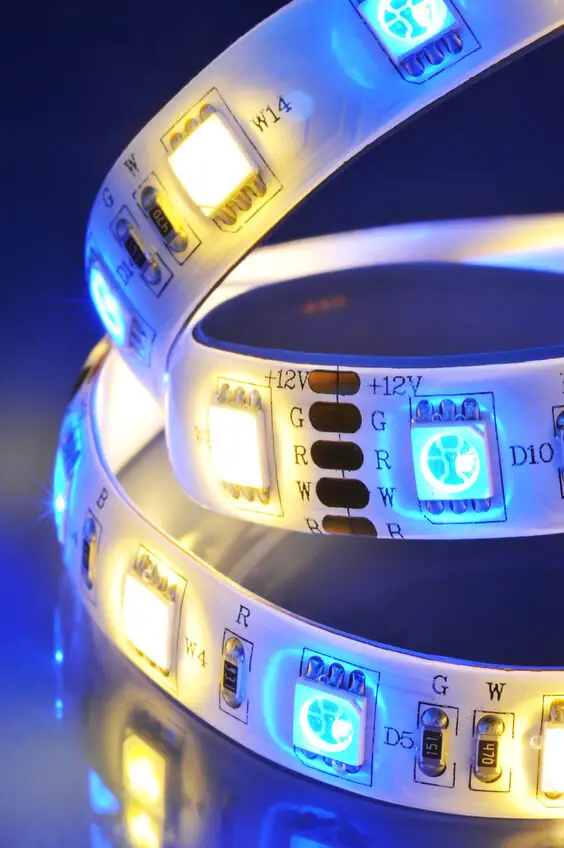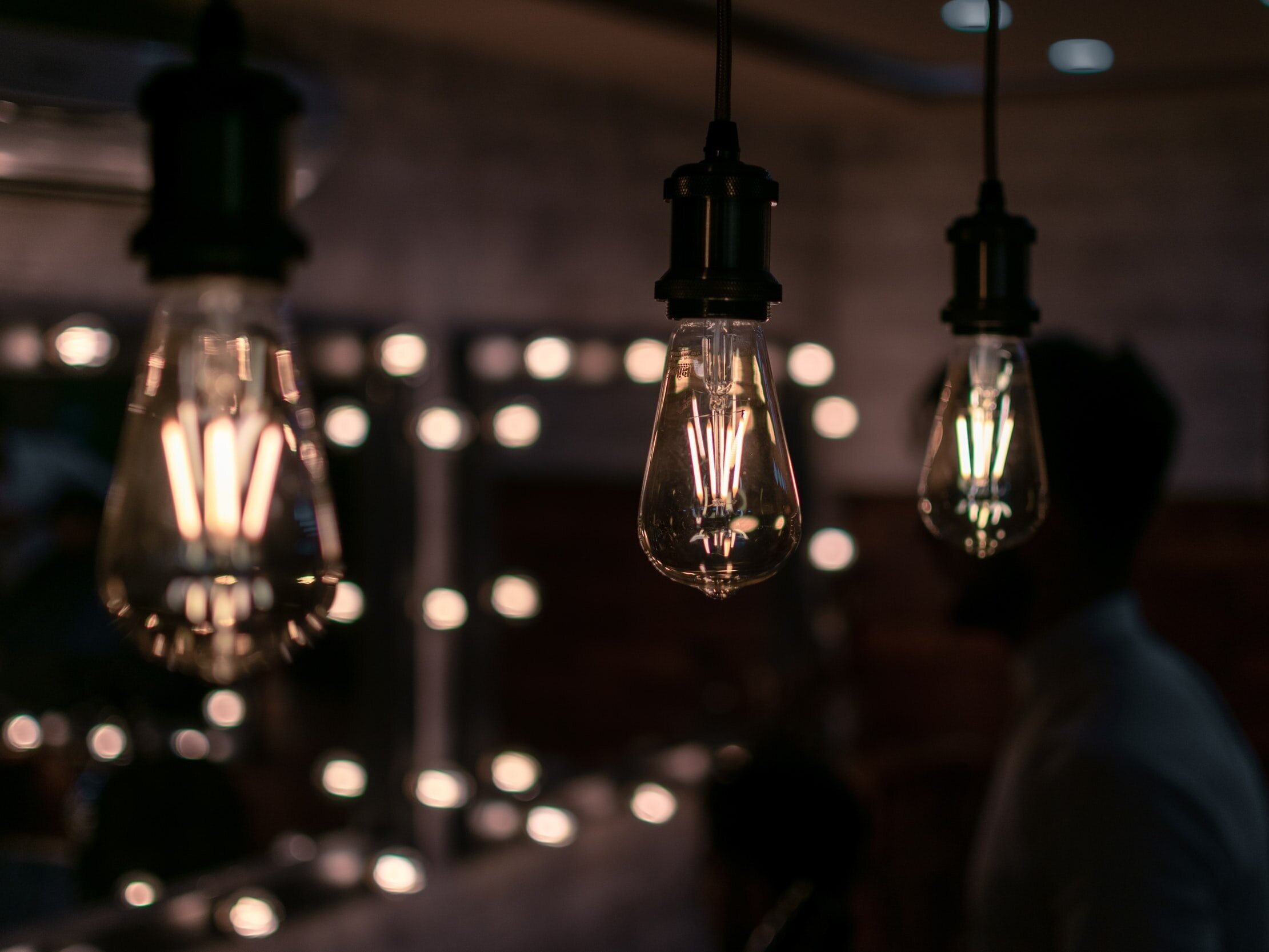The Disadvantages Of LED Lighting
LEDs are widely known for being one of, if not the best lighting solutions currently available. It is known for its extremely high energy efficiency and long lifespan, which are both important qualities in terms of the long-term sustainability of lighting. For more about the advantages of LED lighting, you can check our more in-depth article on it here.
While there are a lot of majorly positive things about LEDs there are also a fair amount of drawbacks to them, some of which may be important and others that are good to be wary about. Here we are going to dive deeper into these factors in order to get a better understanding of how LEDs may not be the ideal choice for your application.

Contents
High Purchasing Cost Of LEDs
One common drawback of LED lighting is that the purchasing cost of LEDs is significantly higher than older solutions such as incandescent bulbs or CFL bulbs.
On average, an LED bulb cost anywhere around $5-15 depending on the quality whereas you can buy incandescent bulbs for $1-2 instead.
While this holds true, it has also been mathematically proven many times that over the course of the LEDs lifetime it will be far cheaper when you factor in its energy efficiency and the number of times it needs to be replaced vs an incandescent bulb, which essentially means that you should treat LED lighting as a long term investment.
It is also projected that LEDs will become cheaper as time goes on. This is mainly because the demand for them is expected to increase and the production processes are expected to become cheaper as a result of this, but for the time being it can be important to acknowledge that they can be more expensive to install in your home.
Decreased Light Output Over Time
One other aspect of LED lighting to be wary of is the fact that the light output of LEDs tends to decrease over its lifespan. This is simply attributed to the LEDs light production deteriorating throughout its use, meaning that this is a completely normal phenomenon.
This happens mostly due to the conditions the LED is put in. LEDs are based on electronics, meaning that they prefer to operate in cooler areas with low humidity. This means that if they are instead placed in an enclosed warm area with high humidity it may lead to a premature light decrease.

While LEDs produce less light during their lifespan it is worth noting that they don’t usually break, they instead keep producing light until the light produced is so dimmed that it is not noticeable anymore.
While this can be considered as a positive aspect it can also be quite negative, since it becomes far more difficult to know when the LEDs should be switched out.
Generally speaking, LEDs are supposed to be replaced when they reach 70% of their original light output. This is because the difference starts to become obvious to the human eye when LEDs reach 70% of their original light, according to tests conducted by the Alliance for Solid-State Illumination Systems and Technology (ASSIST).
However, it might be difficult to notice this since the change in light output is very gradual, meaning that you’ll simply get used to the light decreasing and may not even realize that it’s happening.
LEDs Potentially Shift Colour Over Time
As well as the LED’s level of light changing throughout its lifetime, it is also quite common for LED emitted colour to change too. In simple terms, this is because the quality of light the LED produces will decrease with increased use.
The reason this happens is because of the phosphor present in LEDs. LEDs naturally give off very blue light and will therefore have a layer of phosphor on top of it to make the light it emits warmer and more even in its spectral distribution.

However, what ends up happening is that the phosphor will start wearing down and breaking during usage if it doesn’t have sufficient heat dissipation capabilities.
This will end up with LED units that start emitting a blue/greenish mudded light where it was originally a warm white light.
For the general purpose of home lighting or simple street lighting, this is not that big of an issue since these environments usually don’t have many demands as for the colour of the light emitted. However, there are definitely scenarios where this can pose an issue.
The colour shift can be an issue in just about anything that deals with cosmetic design. For example, if an art gallery were to have LEDs with degraded colouring it may start to reflect poorly on the art.
It is also problematic for lighting such as LED strips, as a colour shift in one LED chip will make itself very apparent and stick out due to how uniform strip lighting is supposed to be.
LEDs Are Worse For Light Pollution
An often-forgotten aspect of LED lighting is that they are more harmful in terms of light pollution than other lighting solutions such as sodium-based lighting.
Light pollution can be described as when artificial light reaches the night sky, which then washes out all the natural light in the sky and causes the sky to appear brighter than it actually is. This causes a lot of disruption to ecosystems and can have a severe health impact on our sleep cycles and other biological functions.
So how exactly are LEDs worse to light pollution than any other bulb? The reason for this is that the natural light wavelengths LEDs produce are a lot towards the blue end of the spectrum, instead of the yellow light that sodium lamps produce.
This is important because blue light is more energetic than any other colour except purple. This is because the wavelengths of blue are shorter than the ones of yellow. A good way to visualize this is that blue simply moves faster/more often than yellow, which means it is more energetic.

The reason why this is an issue is that the effects of light pollution are proportional to the lighting energy we project towards the sky. Since blue is more energetic than yellow it means that LEDs are generally more harmful to light pollution than sodium lamps.
Even if we don’t intend on shining LEDs towards the sky it doesn’t always help, because with the added energy of the blue light they create they can much easier reflect from the ground towards the sky too. This means that even if they are aimed completely down they are still prone to reflect light upwards.
LEDs May Break Prematurely
Another aspect of LED lighting to be wary of is that they can be prone to breaking prematurely. This can be for a lot of different reasons, but almost all of them tie to the fact that LEDs are based on small electronic components.
This is unlike older bulbs like the halogen bulb and incandescent bulb, which in comparison are quite robust since they mainly consist of their framework and the tungsten thread inside of them. LEDs on the other hand are small electronics, which can be sensitive to aggressive handling or voltage changes.
LEDs Are Sensitive To Voltage Changes
Something else that can be slightly concerning about LEDs is that they can be quite sensitive to big changes in voltage, due to the nature of electronics.
They are most sensitive to increases or spikes in voltage, as overloading electronic devices usually tend to lead to burnout of some sort or to a shortened lifespan. When the voltage drops it simply causes the LED to either dim or shut off temporarily, depending on its construction.
This can be problematic if the electrical network your home is connected to is prone to power surges. Power surges can be quite unpredictable and therefore hard to account for, but some common reasons for them are large electrical loads (such as large motors or machines) starting or stopping and lightning bolt strikes on a nearby transformer.
LEDs Require A Transformer
In relation to LEDs being sensitive to their received electrical current, they also require a transformer to receive a current they can accept and use.
This can be a bit problematic in terms of the installation of LEDs since you also need a place to hide the transformer block away.
It also adds another element of potential failure of its operation. LEDs themselves can work up to 100 000 hours nowadays, whereas most transformers they’re attached to may break after 25 000 or 50 000 hours. While it can be replaced with a new one it can be quite a hassle to do so.
LED Light May Feel Cold/Artificial
Another potential issue with LEDs is that it is possible for their emitted light to feel “cold” or artificial. This is mainly attributed to the fact that the natural light complexion of LEDs is mainly a blueish-white light. This can cause things to feel very sterile and artificial, which is why they are often used in places such as hospitals.

In environments like these, it may even be considered a positive trait to have a light that feels a bit sterile but also feels clean.
However, if we take this same light into a home environment it might feel way too artificial, due to how brightly white everything feels under it. This can however be solved by using LEDs with a lower Kelvin/CCT, as those will appear warmer.
The issue with that however is that warmer LEDs will have additional phosphor added to them in order to appear warm, and the more phosphor is added the more losses in light emission we will see.
Colours May Appear Different Under LED Light
Another rather common issue with LEDs that are tied to their artificial nature is that colours may appear different under their light.
This is tied to the potential poor CRI rating of lower-quality LEDs. The CRI, also known as the Colour Rendering Index of light, indicates how well a light reflects colours and a poor CRI rating, it means that colours may not appear correctly under it.

CRI is measured between 0-100, where 0 means no correct colour rendering at all and 100 means a perfect colour rendering. Generally speaking, a CRI of 80 or above is considered acceptable and a CRI of 90 and above is considered excellent. That said, there are currently LEDs being sold with a CRI under 80 and even under 70, meaning it is possible to run into light which may not make colours justice at all.
That being said there are also LEDs with high CRIs above 80 and others known as “full-spectrum“, which will have a CRI between 90-99.
Having a high CRI light is only really important when dealing with the aesthetic presentation of something, for example, the fruits in a grocery store, the paintings in an art gallery or by the makeup mirror. That being said, it is still important to know of this since it depending on its application it can be very important.
LEDs Have A Risk Of Flickering
Something else to keep in mind is that LEDs unlike, older bulbs like halogen and incandescent, might pose a risk of causing a flickering light.
Why LEDs flicker can depend on a variety of reasons. Some of these reasons are (but not excluded to);
Incorrect dimming
Faulty LED driver
A loose bulb connection
While flickering LEDs can be very annoying and also pose a risk to your eyes there are also ways to deal with flickering LEDs. For more explanation as to how these factors can cause LEDs to flicker and how to make it stop we recommend you go here.
LEDs Need Good Heat Management
Another aspect that may pose to be an issue is that LEDs require good heat management for them to be as effective as they can be.
Heat management for LED bulbs and other larger applications of them is mostly solved in the form of a heatsink. A heatsink is essentially a piece of thermally conductive material that will bring the heat away from the junction, which is where the light and heat are created in the LEDs.
This usually works well but can also be insufficient if the ambient temperature the light is running in is too hot.
As mentioned before, the quality of an LED can decrease drastically if it’s subject to too much heat. The main issue is that its lifespan can significantly shorten with enough heat added to it, so much so that it might even burn out completely.
While the light quality and lifespan can be compromised with bad heat management, it is, however, unlikely that it will create real dangers related to this, such as a fire. For more information on this, we recommend you read our article about LEDs overheating and the probability of them causing a fire.
Low-Quality LEDs May Be Dangerous
One key aspect to consider about LEDs is that the quality can matter a lot. Not only because of the general quality of the light the product produces but also for safety reasons.
Much like any other electronic device, low-quality ones could pose some safety concerns in that they may catch fire on their own due to poor heat management, poor materials used or bad assembly of the product.
While this can be a risk it is easy to get around by simply purchasing LED products from reputable and safe brands, also those that have safety certifications on the packaging. In the EU there is the CE certification, which ensures the safety of electrical products.
However, there are no universal safety certifications for US products, this is instead determined state by state and not as the whole country. This is why we’d recommend buying from brands you feel comfortable with if you’re based in the US.
LEDs May Be Too Bright
Depending on the intended use of the lighting in question, it is possible that LEDs might be too bright for it.
If you are simply exchanging the 60W incandescent bulb with a 10W LED bulb in your kitchen you are most likely fine since the light in the ceiling isn’t very obtrusive even when very bright.
This however can’t be said for every application. For example, if you were to exchange your reading light with an LED you might experience that it becomes way too bright for your nighttime reading.

This is also because LED lighting can be considered whiter and therefore more “sharp“ whereas the glow from an incandescent or halogen might feel softer and cosier in this setting.
Chances are that this is not a very common issue at all but it is important to be aware that LEDs may be perceived as “too bright“ when put in an environment like this one.
Conclusion
There are plenty of things to be concerned about when thinking about the use of LED lighting. That being said, a lot of it can be avoided by simply choosing quality LED products.
The higher-quality LEDs of today are generally very good and have come a long way in the past 30 years. So, despite all of the negative factors mentioned here, we’d still recommend buying LED-based lighting as long as the purchase is well-informed and suitable for the intended use.





